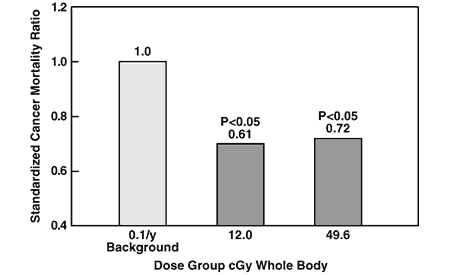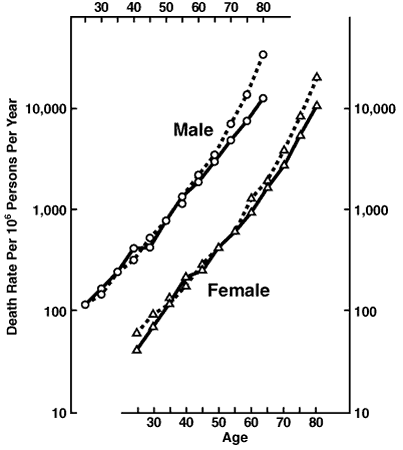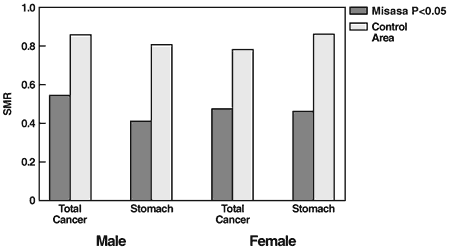![]()
疫学調査(1)
以下に述べるように、近年この現象に関する統計的に信頼性のある疫学データが集まりはじめた。低線量もしくは中線量放射線照射は健康に有益である。放射線ホルミシスとは、害にならない程度の放射線照射により生体を刺激活性化する効果のことである。
 |
| Fig1 | Standardized cancer mortality ratio in 3 exposure groups of Eastern Urals villagers followed for 30 years after a thermal expiosion. September 1957 in the Mayak USSR reprocessing facility. Jaworowski Z (1995) Kostyuchenko VA, Krestina L Yu. Long-term irradiation effects in the population evacuated from the East-Urals radioactive trace area. The Sci Total Environ 142:119-125 (1994) |
| 図1 | 1957年の東ウラル地方の事故による放射線被ばく住民のがんによる死亡率 |
事故による放射線被ばく住民を線量により3グループに分けて30年間の追跡調査を行った。49.6、12.0、4.0 cGyの被ばくにより、がんによる死亡率がそれぞれ非被ばく者に比べ28、39、27%低下した。
 |
| Fig2 | The higher death rate after 55 years old (dotted line) corresponds to the people living in Nagasaki, who were not exposed to A. Bomb. Lower death rate after 55 years old (solid line) corresponds to A. Bomb survivors. Mine M, et al. (1981) |
| 図2 | 原子爆弾被害者のにおける低線量放射線被曝の有益な効果 |
 |
| Fig3 | Standardized mortality ratios of populations continually exposed to high, Misasa radium springs, and low air concentrations of radon. Kondo S. 1993. |
| 図3 | 三朝ラドン温泉地域の住民の他地域の住民に比べて低いがん死亡率 |